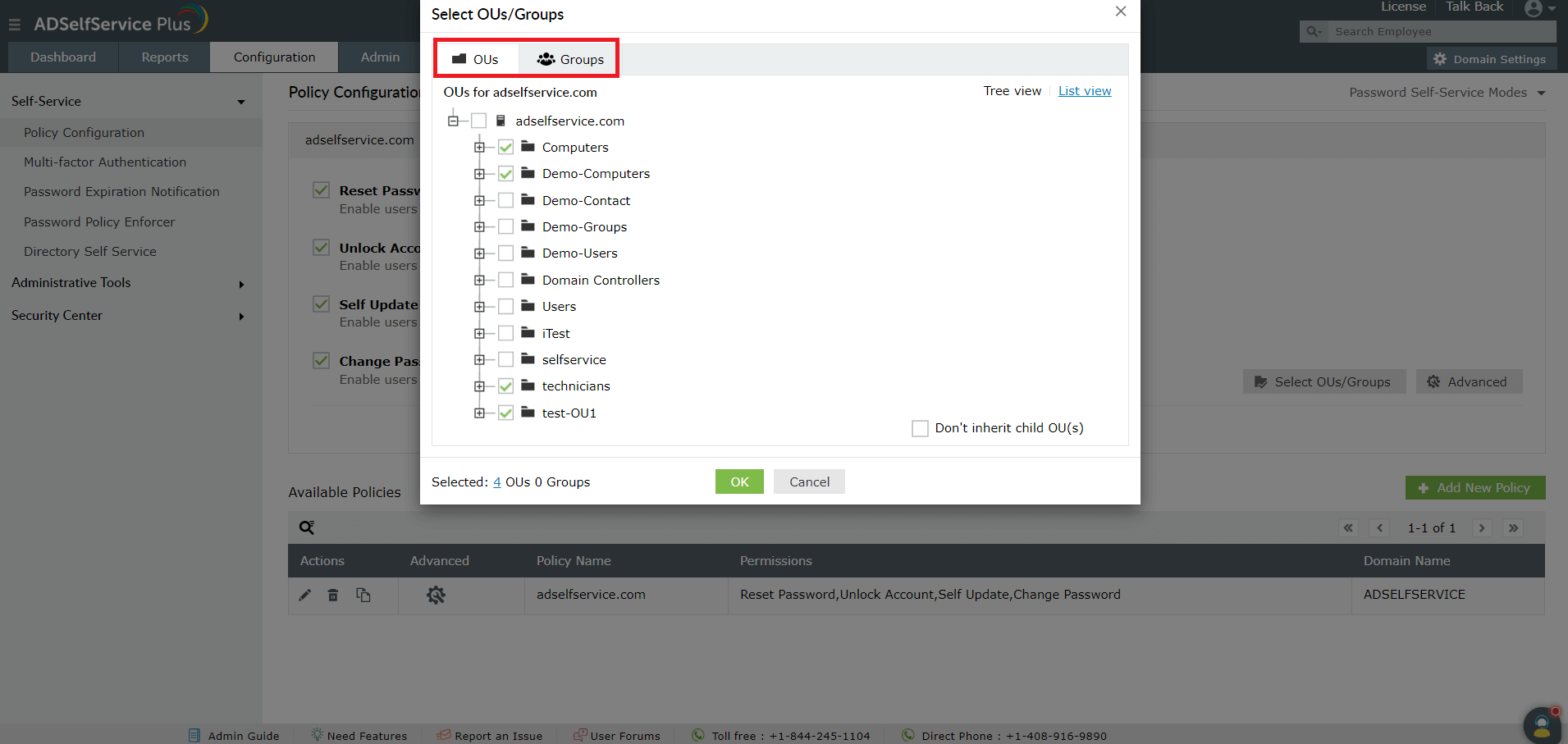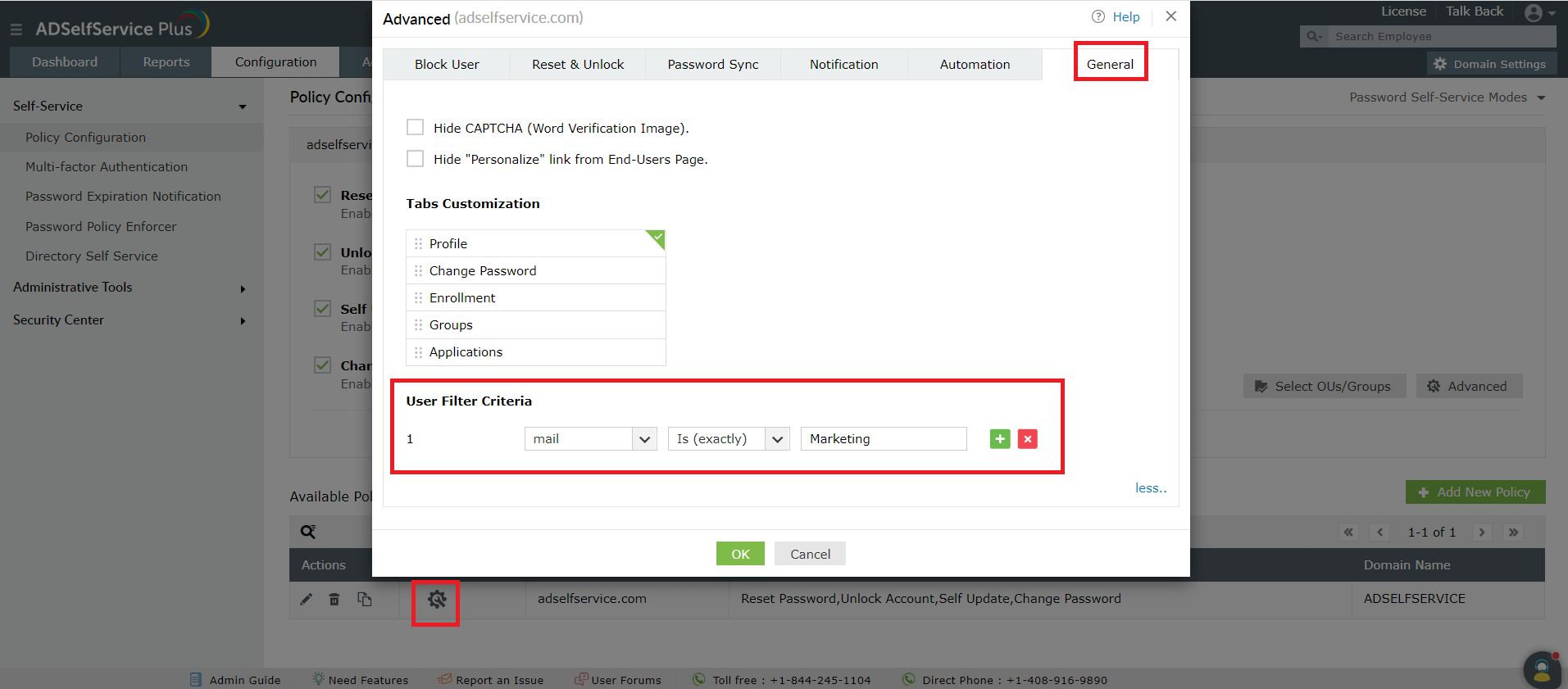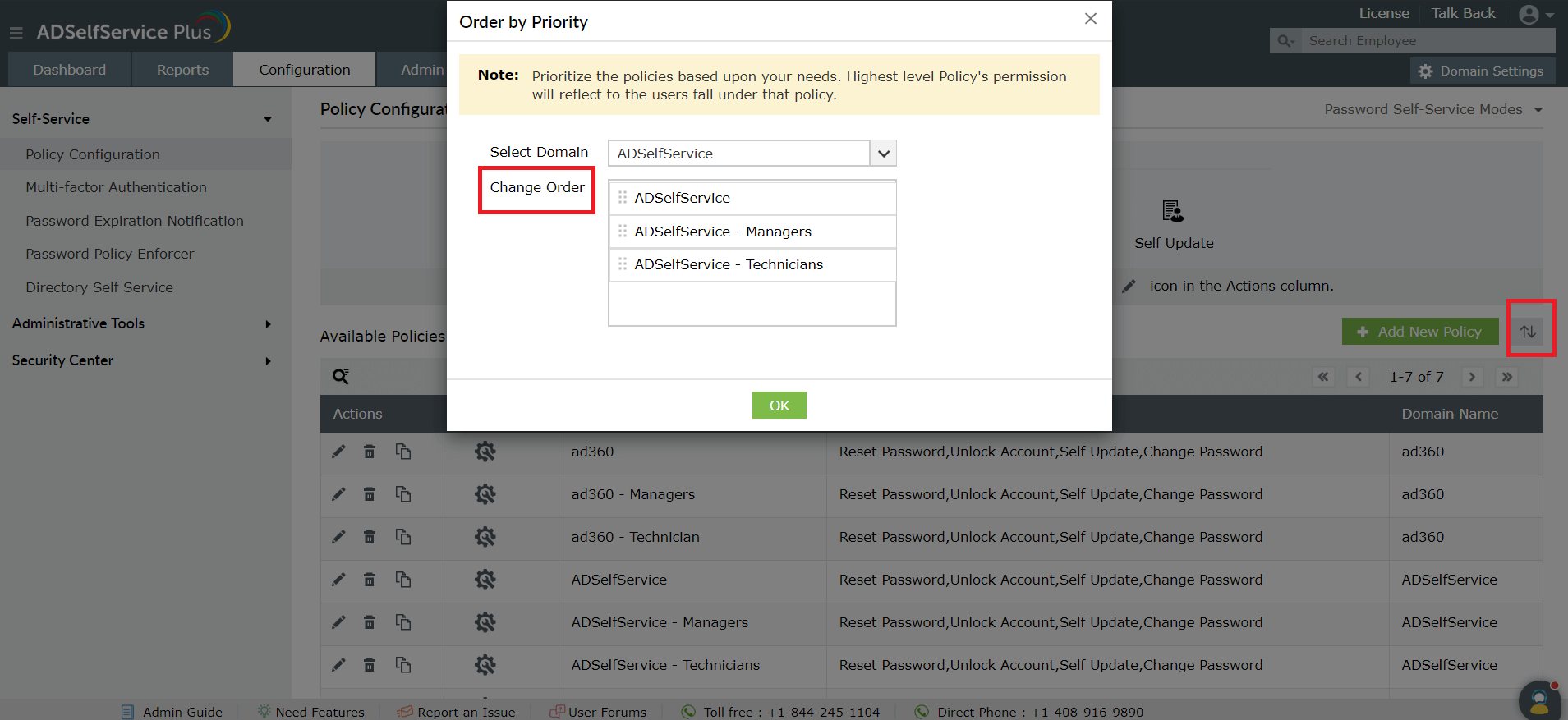Group and OU-based Self-Service Policy Configuration
What are self-service policies?
The self-service policies in ADSelfService Plus govern what self-service features users can avail. These policies have advanced settings which can be configured to apply restrictions on how users use the self-service features.
Group and OU-based Configuration
It is highly likely that not all users in a domain would require similar self-service permissions and restrictions. Keeping it in mind, ADSelfService Plus has an option to configure OU and group-based self-service policies. You can apply self-service policies to a domain or a group or even an OU.

Additionally, you can assign self-service policies to users based on their attributes as well.
Steps to assign self-service policies based on user attributes:
- Navigate to Configuration > Self-Service > Policy Configuration.
- Select the advanced button of the respective policy, and navigate to the General tab.
- Click more and select the Add Filter option.
- Choose an attribute, select the condition (Example: Contains, Starts With, etc.), and enter the value against which the condition has to be checked. (Example: Department Contains Marketing).
- Click the + button to add more conditions if required.
- Click OK to save the settings.

Prioritize Self-Service Policies
You can prioritize self-service policies so that if a group or an OU falls under multiple self-service policies, the self-service policy with the highest priority will take effect.

We will see more about the settings available in the Advanced Policy Configuration next week.
New to M365 Manager Plus?
New to M365 Manager Plus?
New to RecoveryManager Plus?
New to RecoveryManager Plus?
New to Exchange Reporter Plus?
New to Exchange Reporter Plus?
New to SharePoint Manager Plus?
New to SharePoint Manager Plus?
New to ADManager Plus?